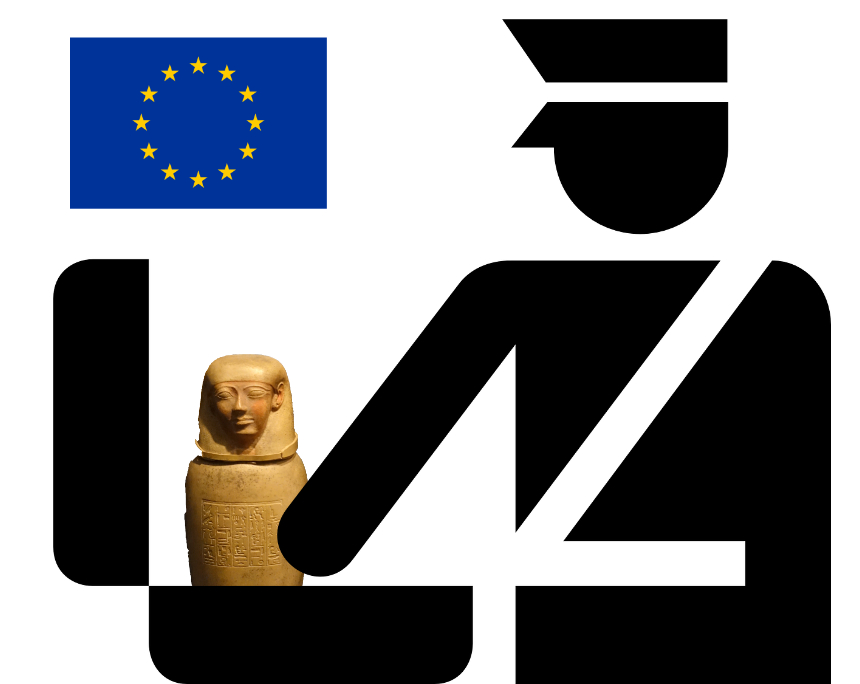Fiasco – A Cautionary Tale of What’s to Come Once the New EU Import Regulation Comes Into Force
By Ivan Macquisten
If you want to get an idea of how enforcement might work under the European Union’s new import licensing regulation after June 28, 2025, here is a cautionary tale, shared by Ivan Macquisten.
Earlier this year, a dealer in Paris bought two fairly inexpensive canopic jars from their California-based owner, whose great grandfather – a friend of the celebrated Egyptologist and finder of the tomb of Tutankhamun, Howard Carter – had had them in his possession for many years.
The jars were despatched to the dealer in Paris at the beginning of May. The dealer was soon notified of their arrival in Paris, but they never made it as far as the gallery.
It turned out that they had been held by Customs for inspection, and the dealer duly offered Customs all the paperwork they had for them. The Customs officials did not require the paperwork, wanting only proof of purchase, which was duly supplied. They continued their inspection and checks, which included contacting the Egyptian authorities to see whether the jars had been listed as stolen or illegally exported.
After two months, satisfied that jars had been legally sold and imported to France, Customs released them back to the courier service, but again they never arrived.
Having heard nothing, at the end of July the dealer contacted the courier service to find out what was going on, only to be told that they would soon be delivered but that delays were due to the shipping agent being on holiday.
Knowing that they were about to leave on holiday, the dealer advised the courier service that they should ensure the packages be delivered no later than August 4. Although reassured that this would happen, they did not arrive by the deadline.
Service Proves ‘Undeliverable’
When the dealer checked again with the courier service, they said that they had attempted to deliver them but the address was wrong. The dealer then confirmed the delivery address but asked for the packages to be held until their arrival back from holiday at the end of August, a request registered with the tracking service. Despite this, three further attempts were made to deliver the packages without any effort to try to contact the dealer, and the packages ended up back in storage. On August 20, the shipping company deemed the packages ‘undeliverable’ and decided to send them back to the USA.
By coincidence, a shipping agent at the airport in Paris who had been involved in the earlier Customs checks had spotted the packages being returned and stopped them, contacting the dealer by email on September 2 to let them know, and confirming that they would be returned to the courier service once more for delivery the following day.
Again, the dealer heard no more and the packages never arrived.
Contacting the courier service once more, they learned that the packages had been dispatched to the airport again for return to the USA.
This time the dealer emailed the same shipping agent, who said that they would try to get them off the plane, later confirming that they had managed to do so. Refusing to leave anything further to chance, the dealer then went to the airport to pick up the packages in person but found that one was missing. They were told it had probably already been sent back to the USA. On inspecting the other package, they found that Customs had not repacked it properly and its contents were broken.
So despite clearance from Customs after inspection and contact with the Egyptian authorities, one package has now been returned to the USA where, according to the US Memorandum of Understanding with Egypt, it risks being seized at Customs and sent back to Egypt, while the other has been mishandled and, far from being protected under the Customs process, has instead been destroyed.
To make things worse, the delay in returning the package to the dealer has taken it over the 90-day limit for making and insurance claim for the damage, as the shippers have now confirmed.
This is just one example of the problems faced by art market professionals when importing to the European Union. What will it be like after June 28, 2025, when Customs will have to check a vast number of additional packages it has not had to deal with before?
About the Author
Formerly Editor of Antiques Trade Gazette, Ivan Macquisten is a writer, commentator, analyst, collector and campaigner in the international art market. His work includes advising the Antiquities Dealers Association (ADA) and International Association of Dealers in Ancient Art (IADAA), as well as trade organizations in other sectors and the UK government.








